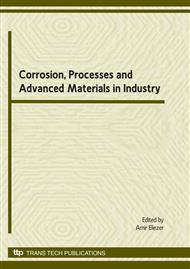p.43
p.47
p.51
p.55
p.61
p.69
p.73
p.79
p.85
Thickness of Concrete Cover for Corrosion Protection of Steel Reinforcement and Crack Control
Abstract:
Thickness of concrete cover positively affects both the protection of the steel against corrosion and the safe transmission of bond forces. On the other hand it affects Crack control inversely, larger concrete cover causes larger crack width, and as a result it yields reduction in the protection of the steel against corrosion. The influence of the distance between the centroid of the longitudinal reinforcement to the neutral axis, and the stress in the tension steel, on the crack width and Crack control, will be examined. Computations will be done using personal computer program developed for nonlinear analysis of rectangular reinforced concrete sections in flexure. The analysis is performed using Stress-strain relationship for confined concrete: parabola – rectangle with decending branch to 0.3 fc at Ecu, followed by horizontal branch. Stress-strain diagram for reinforcing steel, with an inclined top branch with a strain limit of E su . Beams and slabs elements sections will be examined for the flexural moments from the external loads acting at serviceability limit state. This paper will introduce by computing the concrete fibers stresses and strains over the height of the section, for different element thickness, the influence of tension steel stresses and concrete cover thickness on crack control and corrosion protection of steel reinforcement.
Info:
Periodical:
Pages:
61-68
Citation:
Online since:
January 2010
Authors:
Price:
Сopyright:
© 2010 Trans Tech Publications Ltd. All Rights Reserved
Share:
Citation:


